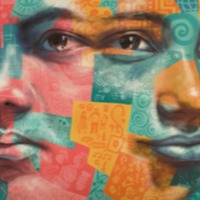
C.
There are an estimated 145,000 people living in conditions of modern slavery in Italy (GSI 2018). Italy is a destination, transit, and source country for women, children, and men subjected to sex trafficking and forced labour. Victims originate from Nigeria, Romania, Morocco, China, and other countries. Female victims are often subjected to sex trafficking in Italy after accepting promises of employment as dancers, singers, models, restaurant servers, or caregivers. Romanian and Albanian criminal groups force Eastern European women and girls into commercial sex. C was raped by her father when she was thirteen years old. She left her abusive home life to live with her sister, where she met a boy and fell in love. When she tried to tell her father he did not accept it and she travelled to Italy illegally with another boy, however they were stopped by the police and she was taken to a centre run by nuns. After a while she returned to Albania where she again met the boy she had fallen in love with, however her father killed him, and she was arrested. After leaving prison C was smuggled to Italy where she was forced into prostitution until she was stopped by the police and deported back to Albania.
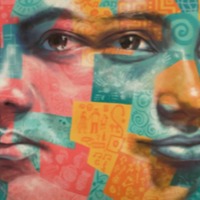
Cyntoia Brown-Long
There are an estimated 403,000 people living in modern slavery in the United States (GSI 2018). Sex trafficking exists throughout the country. Traffickers use violence, threats, lies, debt bondage and other forms of coercion to compel adults and children to engage in commercial sex acts against their will. The situations that sex trafficking victims face vary, many victims become romantically involved with someone who then forces them into prostitution. Others are lured with false promises of a job, and some are forced to sell sex by members of their own families. Victims of sex trafficking include both foreign nationals and US citizens, with women making up the majority of those trafficked for the purposes of commercial sexual exploitation. In 2015, the most reported venues/industries for sex trafficking included commercial-front brothels, hotel/motel-based trafficking, online advertisements with unknown locations, residential brothels, and street-based sex trafficking. Cyntoia Brown Long was 16 years old when she was sentenced to life in prison for the murder of a man who had bought her for sex. Cyntoia had run away from home and met a 24-year-old man who went by the name ‘Kut Throat’. She thought he was her boyfriend and was living with him in motels around Nashville, doing cocaine every day. However, ‘Kut Throat’ trafficked Cyntoia into forced prostitution. If she did not come back with cash, he would beat and rape her. One night in August 2004, Cyntoia was picked up at a fast-food restaurant by a man who agreed to pay her $150 for sex. After arriving at his house, he began showing her his gun collection, making her fear for her life. She later shot him in self-defence. Here she talks about learning that she had been trafficked and being granted clemency.
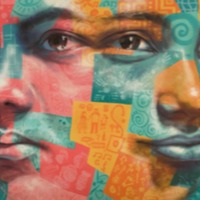
Vian
ISIS has singled out the Yezidi minority, notably its women and children, for particularly brutal treatment. In August 2014, ISIS fighters abducted hundreds, possibly thousands, of Yezidi men, women and children who were fleeing the IS takeover from the Sinjar region, in the north-west of the country. Hundreds of the men were killed and others were forced to convert to Islam under threat of death. Younger women and girls, some as young as 12, were separated from their parents and older relatives and sold, given as gifts or forced to marry ISIS fighters and supporters. Vian was 15 years old when kidnapped by ISIS in August 2014 and held for 4 months in Raqqa, Syria. Vian tells of the atrocities she witnessed against girls as young as 7 by ISIS men. One afternoon Vian ran away and was able to make it to Turkey where her Uncle picked her up and brought her home to her family.
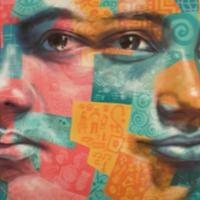
Ariana
ISIS has singled out the Yezidi minority, notably its women and children, for particularly brutal treatment. In August 2014, ISIS fighters abducted hundreds, possibly thousands, of Yezidi men, women and children who were fleeing the IS takeover from the Sinjar region, in the north-west of the country. Hundreds of the men were killed and others were forced to convert to Islam under threat of death. Younger women and girls, some as young as 12, were separated from their parents and older relatives and sold, given as gifts or forced to marry ISIS fighters and supporters. Ariana was kidnapped by ISIS in August 2014 when they invaded her school, divided the girls up and sold them. Ariana was held in ISIS captivity for 9 months and sold five times to different men. She was finally able to escape when she convinced one of the men to sell her back to her family.
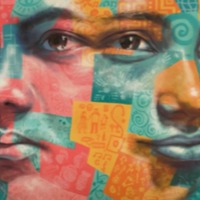
Nadia Murad
ISIS has singled out the Yazidi minority, notably its women and children, for particularly brutal treatment. In August 2014, ISIS fighters abducted hundreds, possibly thousands, of Yezidi men, women and children who were fleeing the IS takeover from the Sinjar region, in the north-west of the country. Hundreds of the men were killed and others were forced to convert to Islam under threat of death. Younger women and girls, some as young as 12, were separated from their parents and older relatives and sold, given as gifts or forced to marry ISIS fighters and supporters. Nadia Murad lived in the Sinjar district of Kurdistan in northern Iraq. Her village, Kocho, was taken by ISIS in August 2014 and people were told to convert to Islam or die. When ISIS failed to convert the Yazidi villagers, they first took the men and executed them, they took young boys to train in combat and kidnapped women and girls and enslaved them in domestic and sexual slavery. Nadine was taken with other women and girls to Mosul where they were distributed among Daesh fighters. Nadine was raped daily, forced to read the Koran and pray. After one unsuccessful attempt, Nadia was able to escape with the help of a Muslim family that lived nearby. She made it to the border with Kurdistan and was then among 1000 Yazidi women taken to Germany for treatment for their trauma.
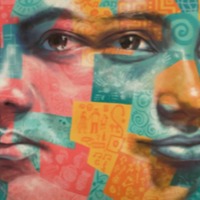
Noor
There are an estimated 520,000 people in enslavement in the Arab States. Within the region, Syria, Iraq, and Yemen had both the highest prevalence of modern slavery and the highest absolute number of victims, accounting for 76 percent of the victims in the region. There is an estimated 174,000 people enslaved in Iraq (GSI 2018). Women and girls have been kidnapped by ISIS. Bought and sold like cattle in markets, raped and tortured daily, they have experienced unspeakable horrors at the hands of their captors. Noor is 22. She was kidnapped by ISIS in 2012, from Kojo in Northern Iraq. She was held captive for several months, suffering daily rape and horrific torture. Incredibly, she managed to escape and today, she is desperate to share her experiences and to raise awareness about the ongoing suffering among those who have escaped.
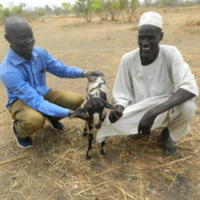
Kiir Uchan Majok
There are an estimated 465,000 people living in modern slavery in Sudan (GSI 2018). Between 1983 and 2005, the central government of Sudan enslaved tens of thousands of black South Sudanese Christian and traditionalist people. It was part of a genocidal war against South Sudan, with a simple aim: to force South Sudan to become Arab and Muslim. Kiir Uchan Majok was captured by Muslim’s and enslaved in Sudan, forced to work on a farm under the threat of constant violence.
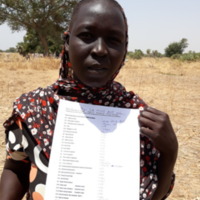
Dhan Deng Bol
There are an estimated 465,000 people living in modern slavery in Sudan (GSI 2018). Between 1983 and 2005, the central government of Sudan enslaved tens of thousands of black South Sudanese Christian and traditionalist people. It was part of a genocidal war against South Sudan, with a simple aim: to force South Sudan to become Arab and Muslim. Dhan Deng Bol was abducted in 1998. She tells of her experience that ended in those captured being divided amongst their kidnappers and forced into domestic service.
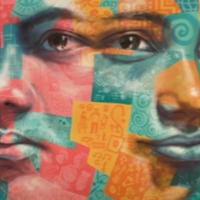
Romina
Countries in Latin America are source, transit and destination countries for trafficking in persons. People are exploited within their own countries and trafficked to other countries in the region, with Latin America being the primary source region for people trafficked to the United States. Major forms of trafficking in persons include commercial sexual exploitation of women and children, labour trafficking within national borders and among countries in the region, and the trafficking of illegal immigrants in Mexico and Central America. The two countries in Latin America and the Caribbean with the largest percentages of their population subjected to modern slavery, are Haiti and the Dominican Republic, according to the Walk Free Foundation. Romina was living on the streets with her father from the age of 9. One day her father was killed and Romina was put into the care of his friend Hugo. From the age of 13, Hugo trafficked Romina into commercial sexual exploitation. Romina was drugged and subjected to daily sexual violence until one day she was rescued during a police raid.
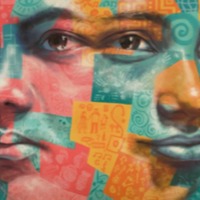
Shin Don Hyuk
The Global Slavery Index 2018 estimates that there are 2,640,000 people living in conditions of modern slavery in The Democratic People’s Republic of Korea (North Korea). Men, women and children are subjected to forced labour and sex trafficking. Government oppression in the DPRK prompts many North Koreans to flee the country in ways that make them vulnerable to human trafficking in destination countries. Many of the estimated 10 000 North Korean women and girls who have migrated illegally to China to flee abuse and human rights violation are particularly vulnerable to trafficking. Some lure, drug, detain or kidnap North Korean women on their arrival, others offer jobs but subsequently force the women into prostitution, domestic service, or forced marriage. If found, Chinese authorities often repatriate victims back to the DPRK where they are subjected to harsh punishment including forced labour in labour camps or death. Shin Don Hyuk was born in a political prison camp in North Korea. He recalls being under the constant supervision of armed guards who would tell him and the other children that they must work hard until they die to pay for the crimes of their parents. When he was 14 years old Shin Don Hyuk reported his parent’s plan to escape but instead of being rewarded was locked up and tortured alongside his family. He gives details of the torture he was subjected to and tells of the execution of his mother and brother. Shin Don Hyuk was able to escape and now tells of his experience to raise awareness of conditions in North Korean prison camps in the hopes of liberating the people kept there.
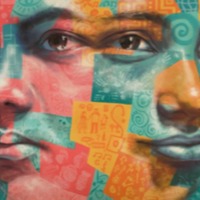
Grace Akello
There are an estimated 465,000 people living in modern slavery in Sudan (GSI 2018). Between 1983 and 2005, the central government of Sudan enslaved tens of thousands of black South Sudanese Christian and traditionalist people. It was part of a genocidal war against South Sudan, with a simple aim: to force South Sudan to become Arab and Muslim. Grace Akello was abducted from her high school dorm in October 1996 by the Lord’s Resistance Army. She, along with 29 other girls, was forced to march to Sudan under the threat of death if they could not keep up. Upon arrival, she was given an AK47 and told hunger would teach her to shoot. Grace was subjected to sexual violence for seven months before she was able to escape in April 1997.
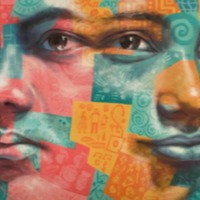
Sheshy
There are an estimated 518,000 people living in modern slavery in Egypt, 465,000 in Sudan and an estimated 451,000 in Eritrea (GSI 2018). Since 2006 tens of thousands of Eritreans fleeing widespread human rights abuses and destitution have ended up in Egypt’s Sinai Peninsula. Until 2010, they passed through Sinai voluntarily and generally without any problems and crossed in to Israel. However, since then, Sudanese traffickers have kidnapped Eritreans in eastern Sudan and sold them to Egyptian traffickers in Sinai who have subjected at least hundreds to violence in order to extort large sums of money from their relatives. Sheshy*, a 17-year-old boy from Eritrea’s capital, Asmara fled to Hafir in Sudan in August 2011 where “Rashaida men” kidnapped and transferred him to traffickers in Sinai who abused him for eight months until his relatives paid $13,000.
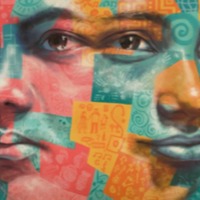
Yonas
There are an estimated 518,000 people living in modern slavery in Egypt, 465,000 in Sudan and an estimated 451,000 in Eritrea (GSI 2018). Since 2006 tens of thousands of Eritreans fleeing widespread human rights abuses and destitution have ended up in Egypt’s Sinai Peninsula. Until 2010, they passed through Sinai voluntarily and generally without any problems and crossed in to Israel. However, since then, Sudanese traffickers have kidnapped Eritreans in eastern Sudan and sold them to Egyptian traffickers in Sinai who have subjected at least hundreds to violence in order to extort large sums of money from their relatives. Yonas* was kidnapped by traffickers traffickers near Sudan’s Shagarab refugee camp in March 2012. These traffickers handed him over to Egyptian traffickers in southern Egypt, who held him in Sinai with 24 other men and eight women for six weeks.
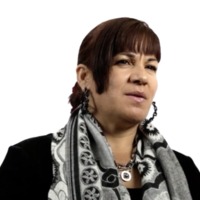
Marisol
There are an estimated 403,000 people living in conditions of modern slavery in the United States (GSI 2018). The US attracts migrants and refugees who are particularly at risk of vulnerability to human trafficking. Trafficking victims often responding to fraudulent offers of employment in the US migrate willingly and are subsequently subjected to conditions of involuntary servitude in industries such as forced labour and commercial sexual exploitation. Marisol Garcia Bejarano spent seventeen years in prison for a crime she did not commit. A survivor of human trafficking she was trafficked from Tijuana to California and was raped and beaten by her trafficker. Marisol witnessed a murder committed by the man who bought her for $200 when she was just thirteen years old. After years of holding her as his domestic servant and sexual slave, he then framed Marisol for his murder, and she went to a California prison for his crime.
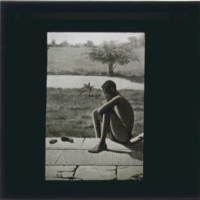
Nsala of Wala
Nsala of Wala with the severed hand and foot of his five year old daughter murdered by ABIR militia. (Anglo-Belgian India Rubber company). Sketch based on a photograph taken by Alice Seeley Harris. This image formed part of the Harris Lantern Slide Collection. Under King Leopold II the Congo Free State used mass forced labour to extract rubber from the jungle for the European market. As consumer demand grew King Leopold II's private army - the Force Publique - used violent means to coerce the population into meeting quotas, including murder, mutilation, rape, village burning, starvation and hostage taking. Alice Seeley Harris and her husband Reverend John H. Harris were missionaries in the Congo Free State from the late 1890s. Alice produced a collection of images documenting the horrific abuses of the African rubber labourers. Her photographs are considered to be an important development in the history of humanitarian campaigning. The images were used in a number of publications. The Harrises also used the photographs to develop the Congo Atrocity Lantern Lecture which toured Britain and the the USA raising awareness of the issue of colonial abuses under King Leopold II's regime.Source: Antislavery International and Panos Pictures.
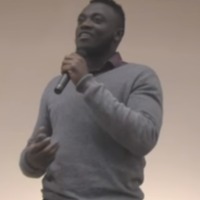
Michel Chikwanine
There are an estimated 1,045,000 people living in conditions of modern slavery in the Democratic Republic of Congo (GSI 2018). In 2016 several armed groups continued to abduct and forcibly recruit men, women and children as combatants and in support roles such as guards, cleaners, cooks and spies. In 2016, 184 cases of child soldiers were reported, with 1,662 children reported to have seperated or escaped from armed groups. Child soldiers who manage to escape remain vulnerable to re-recruitment as adeqaute rehabilitation services remain unavailable to children suffering trauma, stigmatisation and the continued threat of armed groups. Michel Chikwanine was 5 years old when he was abducted by rebel soldiers while playing football with his friends. Driven for hours to an unknown location, when Michel and his friends finally stepped out of the trucks, they were drugged, blindfolded, given guns, and forced to shoot each other. For two weeks Michel was subjected to ‘training’ and then taken with other child soldiers to ‘take over’ a village. Michel was able to escape, running for 3 days and 3 nights through the jungle back to his home village. Michel now lives in Canada and is studying at university alongside working as a survivor advocate to eradicate the use of child soldiers.
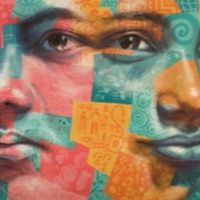
Sophie A.
The Central African Republic is a source, transit and destination country for men, women and children trafficked for the purposes of forced labour and sexual exploitation. The majority of those trafficked are children subjected to sexual exploitation, domestic servitude, ambulant vending and forced labour. Moreover, civil unrest in the country has led rebels such as the anti-balaka to conscript children into armed forces in the northwestern and northeastern regions, as well as kidnap, rape and subject to conditions of modern slavery, many Muslim women in the country. Sophie, 22, was held by two different groups of Seleka fighters as a sexual slave in separate incidents. After the Seleka burned down her family home in Bambari around June 2014, Sophie fled into the bush with four other young women. She described how Seleka fighters caught the group and kept them captive in the forest.
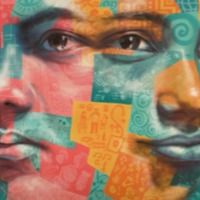
Alice
The Central African Republic is a source, transit and destination country for men, women and children trafficked for the purposes of forced labour and sexual exploitation. The majority of those trafficked are children subjected to sexual exploitation, domestic servitude, ambulant vending and forced labour. Moreover, civil unrest in the country has led rebels such as the anti-balaka to conscript children into armed forces in the northwestern and northeastern regions, as well as kidnap, rape and subject to conditions of modern slavery, many Muslim women in the country. Alice was traveling in a shared taxi in April 2016 when four anti-balaka fighters armed with rifles, machetes, and knives stopped the car near mbaïki, in Lobaye province. The fighters slashed the taxi’s tires, shot the driver in the leg, and took Alice and five other women and girls to a nearby base, where they were held as sexual slaves for three days until she and the other girls were able to escape.
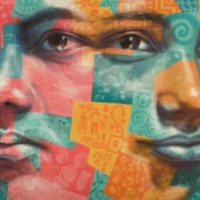
Angèle
The Central African Republic is a source, transit and destination country for men, women and children trafficked for the purposes of forced labour and sexual exploitation. The majority of those trafficked are children subjected to sexual exploitation, domestic servitude, ambulant vending and forced labour. Moreover, civil unrest in the country has led rebels such as the anti-balaka to conscript children into armed forces in the northwestern and northeastern regions, as well as kidnap, rape and subject to conditions of modern slavery, many Muslim women in the country. Angèle, 27, became pregnant and gave birth to a child as a result of repeated rape after Seleka fighters killed her husband and took her near Bambari in June 2014. She was held in sexual slavery for nine months with five other women and girls.
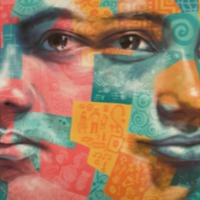
Young-Soon
The Democratic People’s Republic of Korea (North Korea) is a source country for men, women and children who are subjected to forced labour and sex trafficking. Government oppression in the country prompts many to flee the country in ways that make them vulnerable to human trafficking in destination countries, especially China. Within North Korea, forced labour is part of an established system of political repression. The government subjects its nationals to forced labour through mass mobilisations and in North Korean prison camps. There are an estimated 80 000 to 120 000 prisoners being held in political prison camps in remote areas of the country. Here men, women and children are subjected to unhygienic living conditions, beatings, torture, rape, lack of medical care and insufficient food. Many do not survive and furnaces and mass graves are used to dispose the bodies of those who die. Young Soon, along with her family, was forced into an internment camp in North Korea as a political prisoner. Forced to live in a cramped hut and fed only gruel, Young Soon worked long hours in a corn field. All members of her family either died of malnutrition or were killed. After nine years, Young-Soon was able to escape to South Korea.